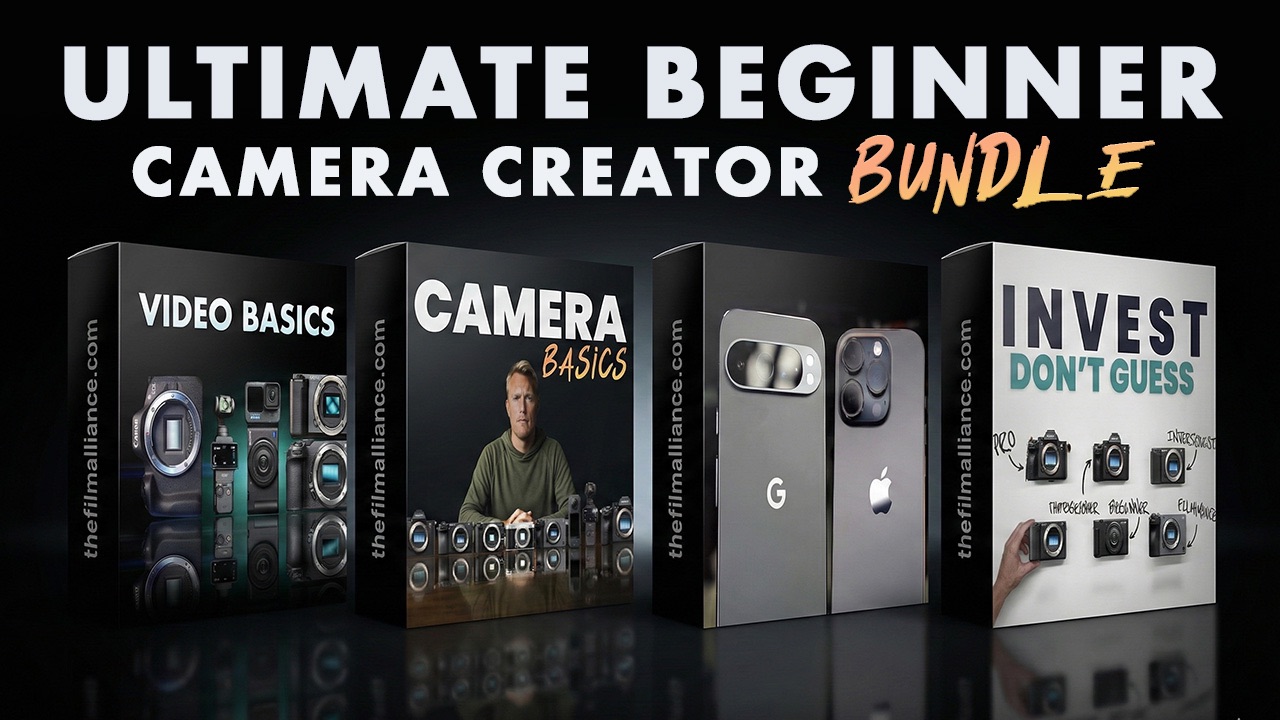
Fujifilm X-M5 Review: This Digital Camera Shoots Like Film
Jul 23, 2025Get the full story watching the video above ⬆️
There’s just something about the look of film. The colors, the softness, the grain—the imperfections are what make it beautiful. But as much as I love that look, shooting on actual film is expensive, time-consuming, and not always realistic for everyday creators.
That’s why I’ve spent the last few months testing digital cameras that promise that “film-like” aesthetic—without requiring a ton of color grading or post-processing. I wanted something compact, inspiring to use, and affordable. And after testing a bunch of options, one camera keeps pulling me back in: the Fujifilm X-M5.
Quick Take: Why the Fuji X-M5?
- 26.1MP APS-C X-Trans CMOS 4 Sensor
- Built-in film simulations like Classic Chrome, Eterna, and ACROS
- Beautiful color straight out of camera — no LUTs or grading needed
- Compact, retro-inspired body
- Shoots 6.2K 10-bit video, 4K/60p, 240fps Full HD
- Priced around $799 USD new (or less if you find it used)
Let’s break down what makes the X-M5 one of the best digital cameras that shoots like film—and why it might be the most underrated Fuji camera in the lineup.
Also here you can find the FREE PROJECT FILES for both cameras so you can dive in and explore for yourself. If you're still on the fence after you read this blog, you can take my free "Which Camera Should I Buy?" quiz

The Fuji Film Look - Without the Film Hassle
If you’re chasing the film aesthetic in a digital workflow, Fuji’s color science is tough to beat. And the X-M5 delivers that look with no LUTs, no filters, no hacks—just great results, right out of camera.
Built-in Film Simulations That Actually Work
This camera comes loaded with Fuji’s signature film simulation modes:
- Classic Chrome – Muted, documentary style
- Nostalgic Neg. – Warm, soft highlights
- Eterna – Cinematic, flat contrast for video
- ACROS – Beautiful monochrome
- Velvia & Astia – Rich colors and contrast for landscapes or portraits
Whether you’re shooting video, portraits, or everyday B-roll, these sims make your footage look like it was shot on actual film stock. I even created a Sony LUT pack that mimics these exact looks—so if you’re on a ZV-E10 II, FX30, or a6700, check the video in the description to get that Fuji vibe on Sony.

Image Quality & Sensor Performance
The X-M5 uses Fuji’s X-Trans CMOS 4 sensor, a 26.1MP APS-C chip that’s a powerhouse in this price range. I compared it side-by-side with the Sony a6700 and Canon R50 V in low light—and even though all three are APS-C cameras, the Fuji held up best in multiple scenes.
Why It Looks So Good
- Better low-light performance with smoother grain
- More natural highlight rolloff
- True-to-life color rendering, even in mixed lighting
- Largest sensor area out of the three, contributing to better shadow detail
If you’re used to smartphone footage or entry-level mirrorless cameras, this sensor makes a huge difference—especially in dynamic lighting.

Fuji X-M5 for Video Creators
Video shooters—this camera isn’t just a photo tool. The X-M5 is a serious 10-bit hybrid camera packed into a small body.
Video Specs:
- 6.2K 10-bit internal recording
- Oversampled 4K at 60fps
- Full HD 240fps for smooth slow motion
- USB-C power + clean HDMI out
- Digital stabilization + lens OIS options
Whether you're shooting interviews, cinematic B-roll, or creative projects, the X-M5 is good enough for client work and fast enough for solo creators.
Design, Build & Handling
The X-M5 has that signature Fuji retro vibe, but don’t let the vintage look fool you—this thing is built for modern workflows.
Ergonomics Highlights:
- Compact, lightweight body
- Flip-out touchscreen – bright and responsive
- No EVF (some might miss it, but the screen makes up for it)
- Full-size mic input, headphone jack, HDMI, and USB-C
- Swappable batteries and SD cards (plus USB-C charging)
If you want better grip, I’d recommend adding a SmallRig cage—it gives you more to hold onto and helps protect the body. The lack of IBIS is a tradeoff, but as long as you're using stabilized lenses or a tripod/gimbal, you’re good to go.
Lens Recommendations for the Fuji X-M5
One of the best things about the Fuji system is the lens ecosystem. If you’re just starting out, the 15–45mm kit lens is honestly decent. It’s sharp enough, has OIS, and works for most general shooting.
But if you’re ready to upgrade, here’s what I use:
Best Lenses for a Film-Like Look:
- Sirui 23mm f/1.2 – Wide and fast, great for night, handheld, and storytelling
- Sirui 56mm f/1.2 – Dreamy bokeh, perfect for portraits and soft background blur
You’ll see sample shots from all of these lenses throughout this post.

Real-World Footage Examples
This isn’t theory. I’ve used the X-M5 in a variety of situations:
- Night city walk – No lights, just street lamps. Skin tones were soft and colors had a cinematic rolloff.
- Food shoot – Classic Chrome and the 23mm lens made it look editorial and timeless.
- Wedding shoot – 18mm indoors for ceremony, 56mm outdoors during golden hour. Gorgeous results.
- Portraits – Shot using Reggie’s Portra film sim recipe—looked like it came out of a vintage photo book.
I’ve included free downloadable project files so you can edit and test the footage yourself. Try it out in your editor and see what you think.
Things to Consider (a.k.a. What It Doesn’t Do)
Let’s be real—no camera is perfect. Here’s what the X-M5 doesn’t have:
- No in-body image stabilization (IBIS) – rely on lens OIS or a gimbal
- No EVF – not ideal for bright sunlight shooting
- No ProRes or RAW external recording – this isn’t a cinema body, but you knew that
For most creators, those trade-offs are worth it for the look, size, and price. But if you do need IBIS or an EVF, you might want to step up to the X-T5 or X-H2.
Who Should Buy the Fujifilm X-M5?
This camera is for you if:
- You love the look of film but need digital convenience
- You want color straight out of camera without needing LUTs
- You create videos, vlogs, or photo content in mixed lighting
- You value portability and simplicity over endless specs
It’s not for you if:
- You need in-body stabilization
- You rely on high-frame-rate 4K or RAW workflows
- You shoot in harsh outdoor light and need an EVF

Final Thoughts: One of the Best Digital Cameras for a Film Look
The Fujifilm X-M5 didn’t get much hype when it launched—but it should have. For under $1,000, it delivers some of the most film-like images I’ve seen from a digital camera, with very little effort. If you’re someone who wants to spend more time shooting and less time editing, this camera is 100% worth your attention.
If I were starting over today and wanted the feel of film with the speed of digital, this would be at the top of my list.
Bonus Resources
- 🎞️ Free Project Files – Download footage from the X-M5 and test it yourself
- 🎬 Sony Film Simulation LUT Pack – Get the Fuji look on your Sony camera
- 📸 Reggie’s Portra Film Recipe – Try it on your Fuji camera (linked below)
- 🔗 Recommended Lenses – Sigma 10-18mm f/2.8 (for Fuji) - https://bhpho.to/401mXaR Fuji Kit Lens - https://bhpho.to/3rlHmJR
- 🛒 Affiliate Links – Purchase this Fuji X-M5 - https://geni.us/c0yBU or https://geni.us/gu48Ba Buying through these helps support the channel (thank you!)
Ready to Try the Fuji X-M5?
You can grab it new or used through my affiliate links. And if it’s out of stock, download the free footage and experiment with it on your own. Whether you’re a beginner or a working creative, this camera is proof that digital can still feel like film if you know where to look.
Thanks for reading. I’m Joe from The Film Alliance and I’ll see you in the next one.



